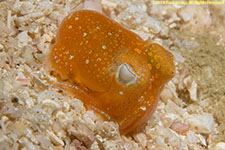
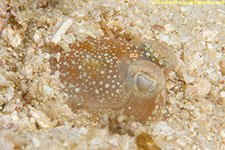

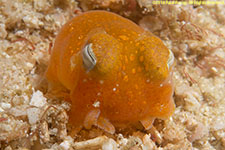
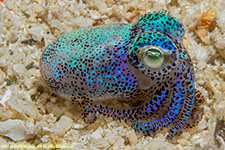 Berry's bobtail squid, Euprymna berryi
Berry's bobtail squid, Euprymna berryiMolluscs have a body cavity used for breathing and excretion, a rasping tongue or radula (except in bivalves), and a nervous system with two pairs of main nerve cords.
Cephalapod molluscs, squid, cuttlefish, and octopus, are among the most neurologically advanced of all invertebrates.
Squids have elongated bodies, large eyes, eight arms, and two tentacles. They are mainly soft-bodied but have a small internal skeleton. Squid can change color.




 Berry's bobtail squid, Euprymna berryi
Berry's bobtail squid, Euprymna berryi
Cuttlefish have a unique internal skeleton, the cuttlebone. Cuttlefish have large W-shaped pupils, eight arms, and two tentacles with suckers. Cuttlefish communicate using visual signals involving color, posture, skin texture, and movement.
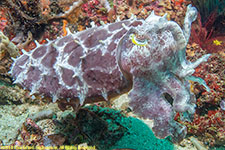
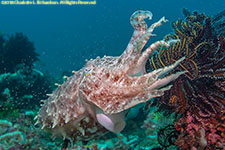
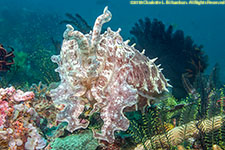 Broadclub cuttlefish, Sepia latimanus
Broadclub cuttlefish, Sepia latimanus
Gastropods are the most numerous molluscs.
Cowries are sea snails. Their shells are usually smooth, shiny, and egg-shaped.
Snails
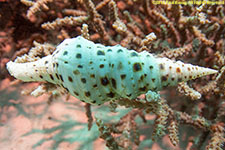 Needle pyram, Pyramidella acus
Needle pyram, Pyramidella acus
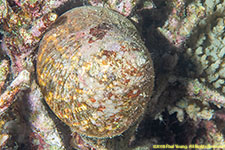 Green top shell, Tectus pyramis
Green top shell, Tectus pyramis
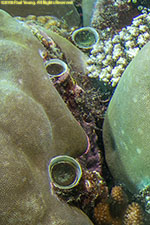 Great coral worm snail, Dendropoma maxima
Great coral worm snail, Dendropoma maxima
Bivalves are molluscs with laterally compressed bodies enclosed with a shell consisting of two hinged parts. Most are filter feeders.
 Boring giant clam, Ttidacna crocea
Boring giant clam, Ttidacna crocea
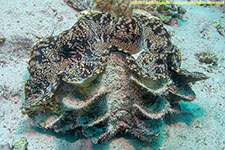 Fluted giant clam, Tridacna squamosa
Fluted giant clam, Tridacna squamosa
 Honeycomb oyster, Hyotissa hyotis
Honeycomb oyster, Hyotissa hyotis
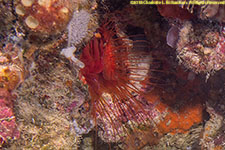 Electric fileclam, Ctenoides ales
Electric fileclam, Ctenoides ales
 Iridescent scallop, Pedum spondyloideum
Iridescent scallop, Pedum spondyloideum
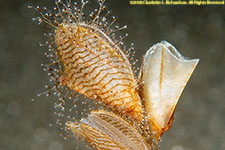 Striped wing oyster, Pteria crocea
Striped wing oyster, Pteria crocea
©2019, 2024, 2025 Mermaid Underwater Photographic. All Rights Reserved.
Contact us at mermaid@underwater.org.
Last modified 11 December 2025